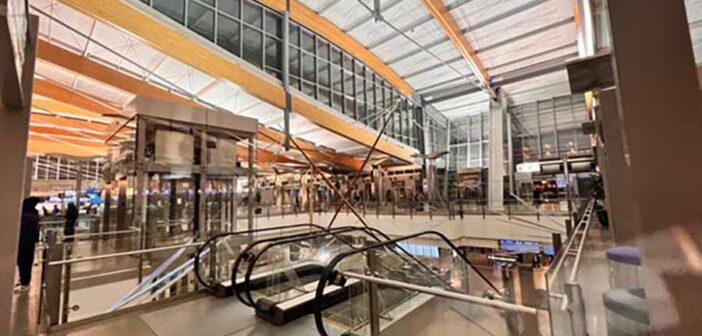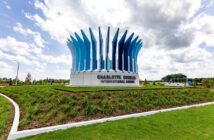Travelers stepping into Raleigh-Durham International Airport discover two terminals handling flights to over 80 destinations, with Delta Air Lines leading the carriers and Breeze Airways serving the most routes at 32.
The setup divides operations simply, Terminal 1 for Southwest and Spirit with its own checkpoint and gates, and the larger Terminal 2 managing everyone else, including international arrivals at its Federal Inspection Station. A free shuttle bus links the terminals every 10 minutes, covering the short distance in under five minutes for those needing to switch.
Passengers navigate airside areas on foot through wide corridors with moving walkways on longer stretches, typically walking five to 10 minutes between gates in Terminal 2, while pre-security spaces keep ticketing and baggage drop straightforward on the upper levels. The airport processes around 15 million passengers yearly now, up from records set in 2023, with expansions adding lanes to security checkpoints and space for more international processing to handle the flow.
Getting to the airport from downtown Raleigh means a 15-mile drive along Interstate 40, taking about 20 minutes in light traffic, or from Durham it’s 13 miles west on the same highway for a similar time. The GoRaleigh Route 100 bus connects Raleigh’s transit center to Terminal 1 every 30 minutes for three dollars, while Durham’s Bull City Connector offers a free ride to the airport from the Durham Station every half hour.
Rideshares pull up curbside on the departures level, taxis wait at marked stands outside arrivals, and rental cars sit in a dedicated facility linked by a quick shuttle ride. Parking garages sit adjacent to both terminals with covered spots starting at 20 dollars a day, economy lots a mile away for 12 dollars, and online reservations ensuring a spot during busy mornings.
Security lines move steadily with 14 lanes in Terminal 2’s checkpoint, open from 4 a.m. to 7:30 p.m., where TSA PreCheck and CLEAR users find dedicated paths keeping waits under 10 minutes most times, though early peaks can stretch that to 20. Connections work smoothly for domestic flights with 45-minute minimums, allowing time to stroll to the next gate or grab a coffee, while international arrivals clear customs in 30 to 45 minutes before heading to baggage or onward shuttles.
On-time departures clock in at about 82 percent, supported by three runways juggling 600 daily operations, but afternoon thunderstorms common in summer can cause 30-minute holds, and ongoing terminal expansions might slow walks near construction zones in the lobby. The airport app delivers gate alerts and delay reasons, from weather to crew scheduling, to keep plans on track.
Dining covers quick grabs like Starbucks open from 4 a.m. in both terminals to sit-down spots such as 108 Perimeter for salads or B. Good for burgers, with many outlets running 6 a.m. to 8 p.m. and local flavors from barbecue to craft beers in Terminal 2’s central area. Retail fills the concourses with Hudson News for magazines and snacks, duty-free in Terminal 2 for chocolates and scents on international trips, and shops like PGA Tour for golf gear or Best Buy Express for chargers near gates.
Facilities include free Wi-Fi across the terminals, power outlets at every seating cluster, pet relief spots airside with grass patches, and a 24-hour meditation room in Terminal 2 for a quiet break. Nursing suites sit post-security in both terminals, accessible restrooms dot the halls, and lounges like the Delta Sky Club offer showers and snacks for members. The airport keeps things running with clear signage and staff at info desks, making layovers or quick turns feel manageable.




